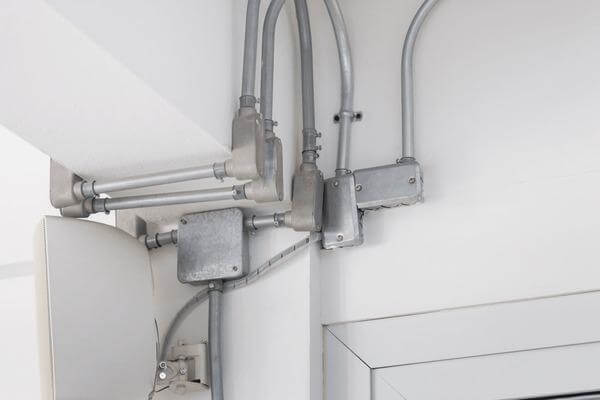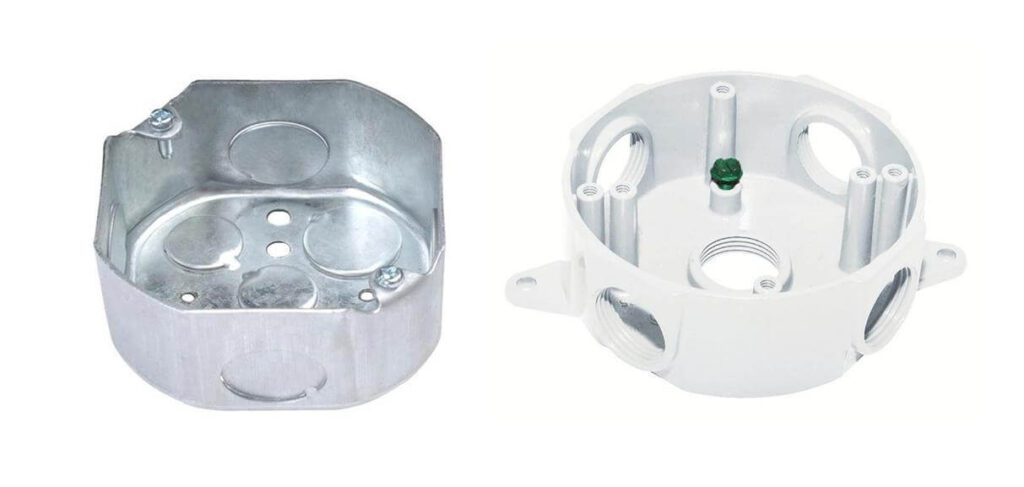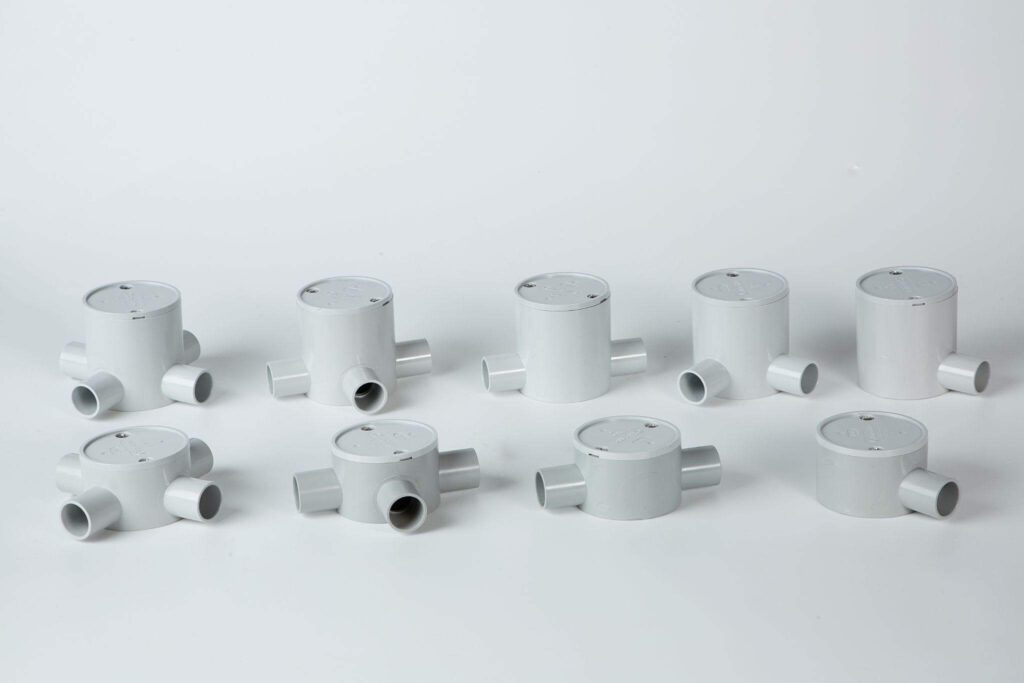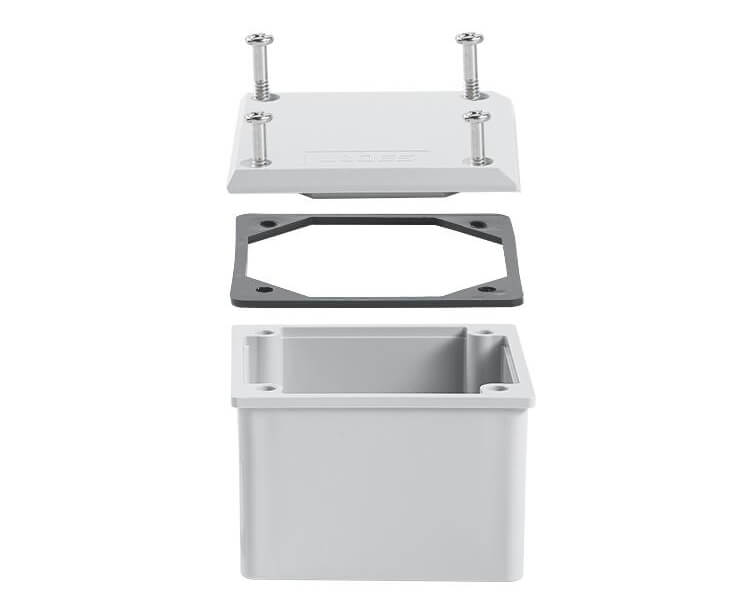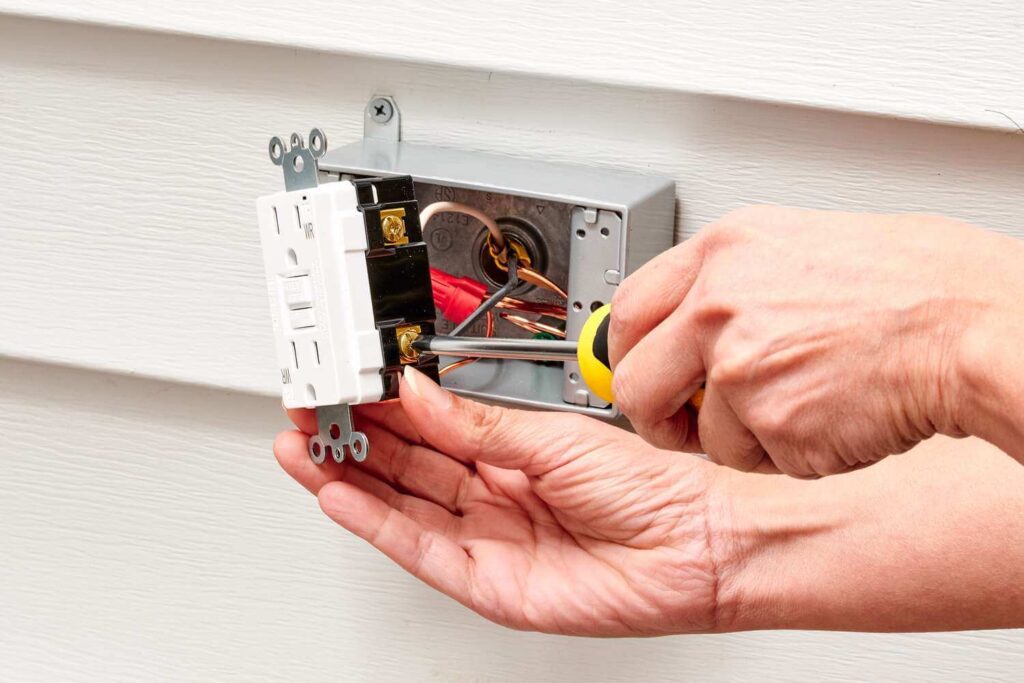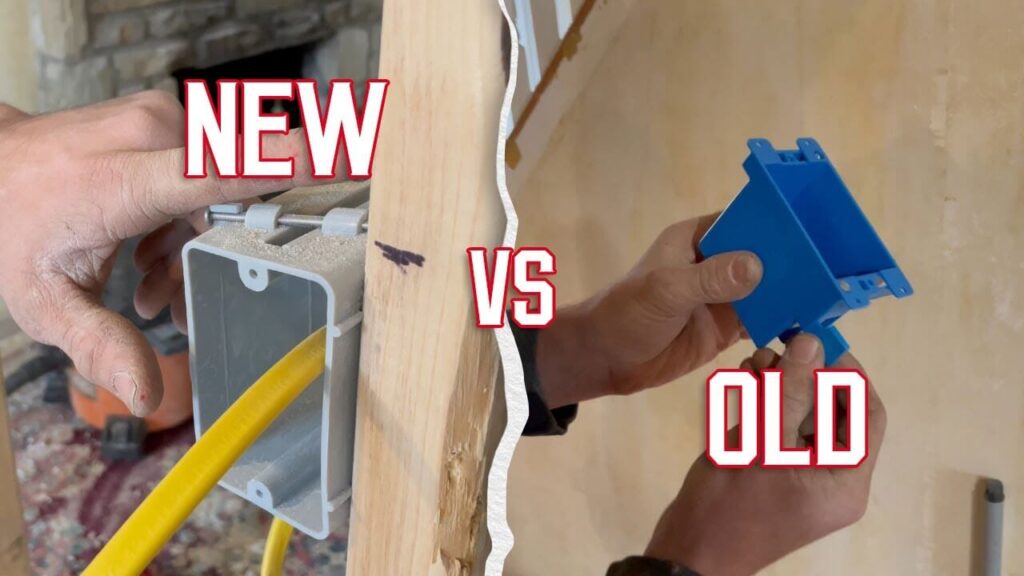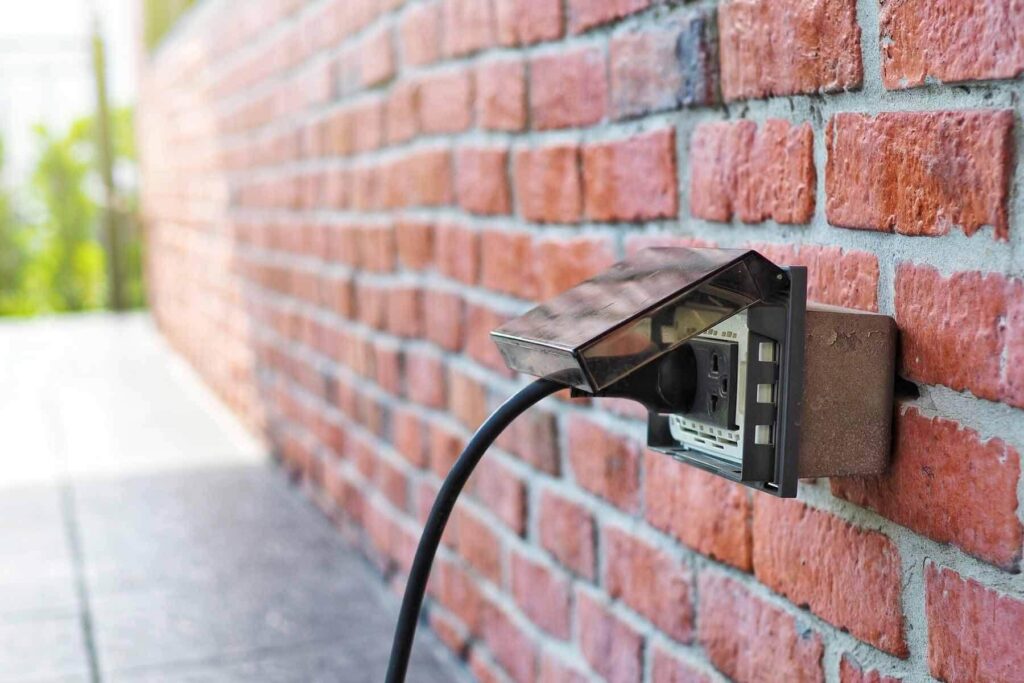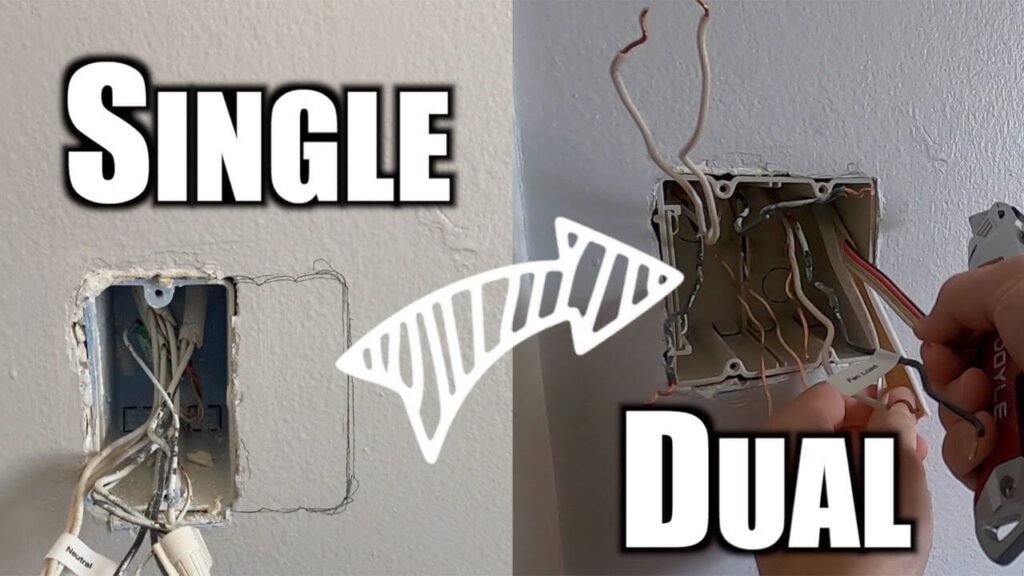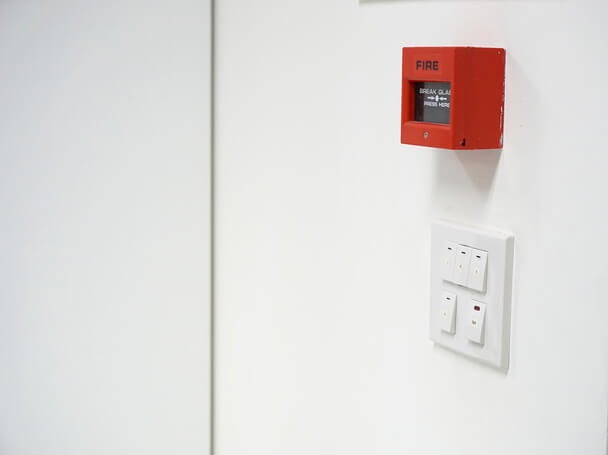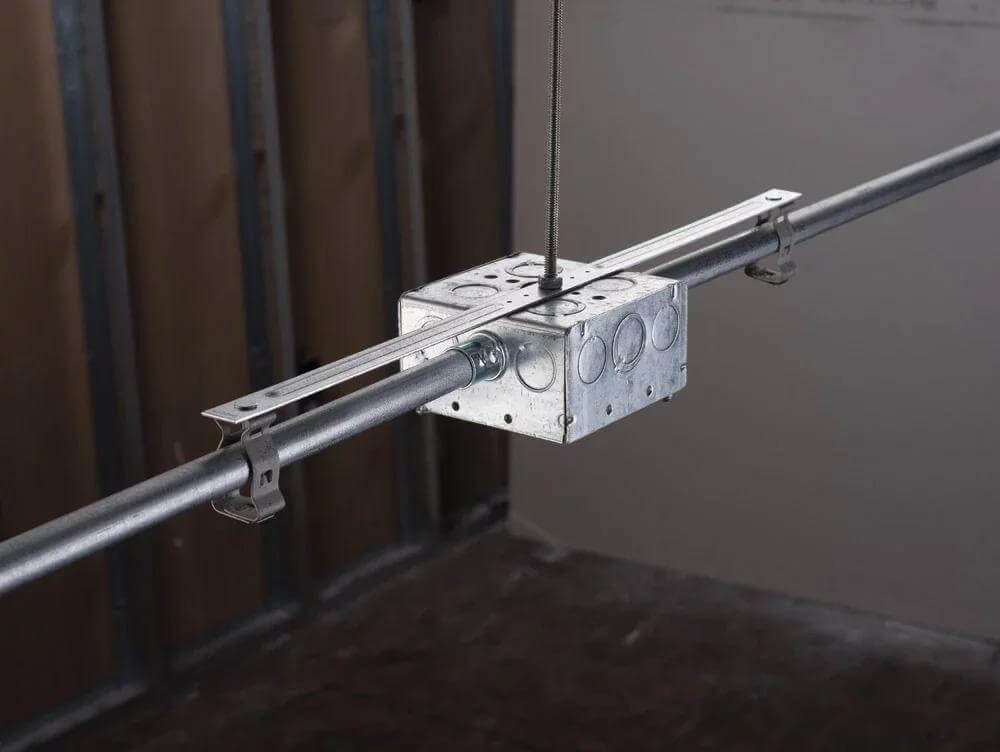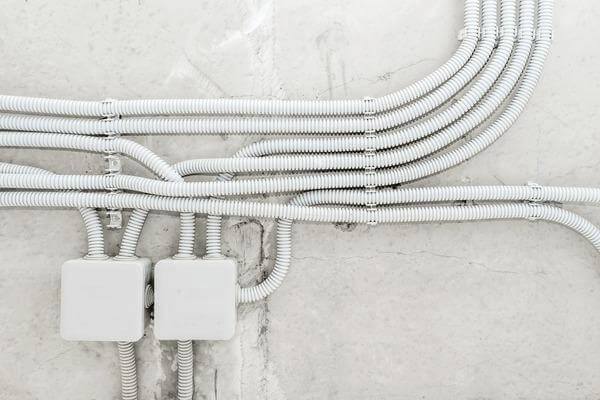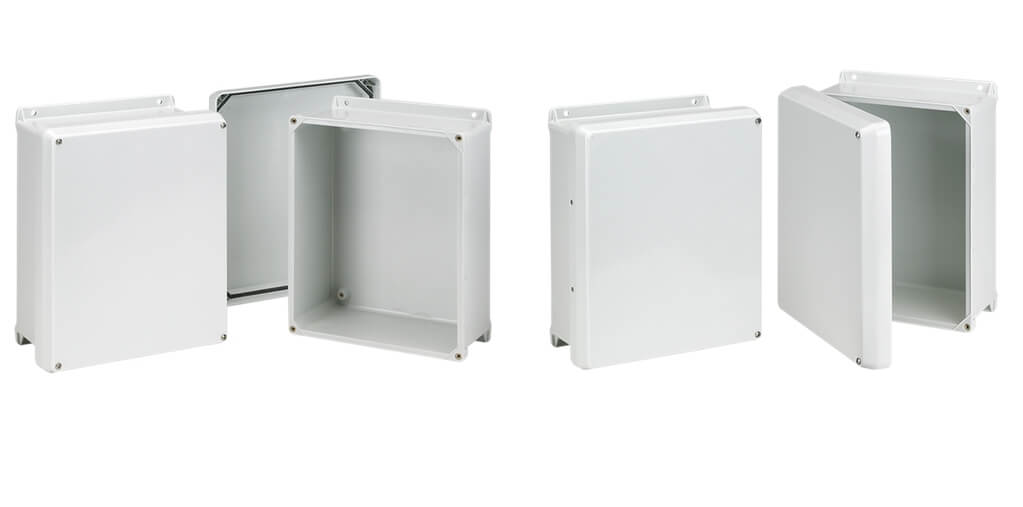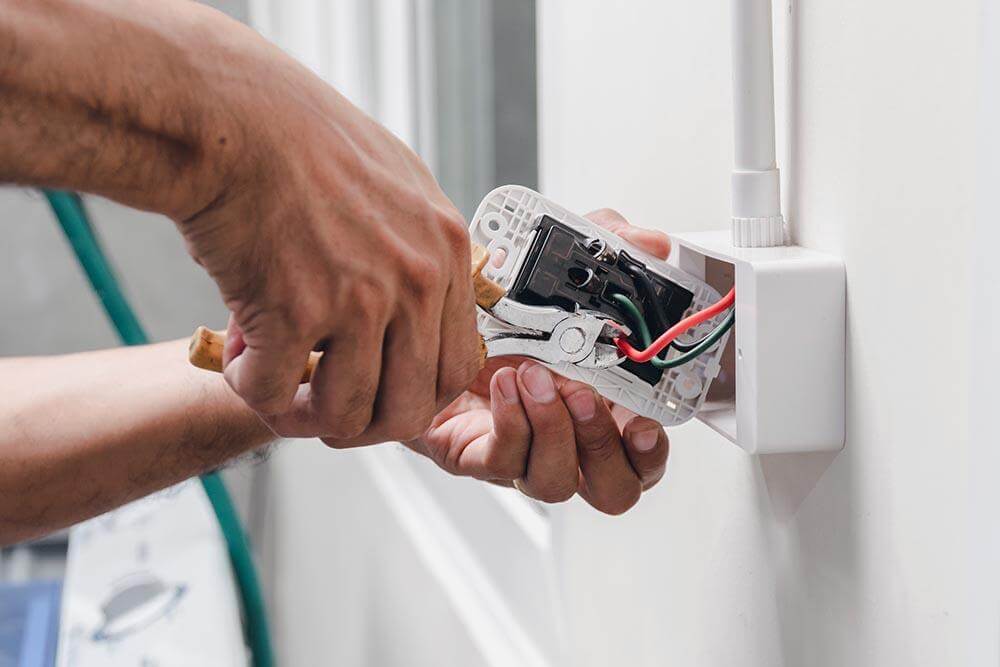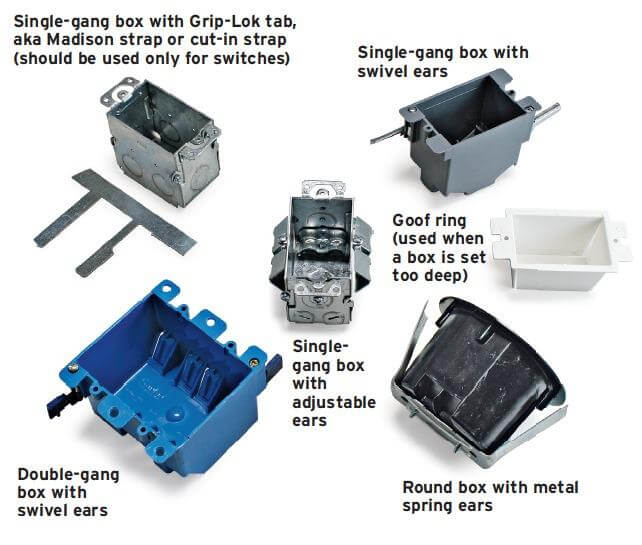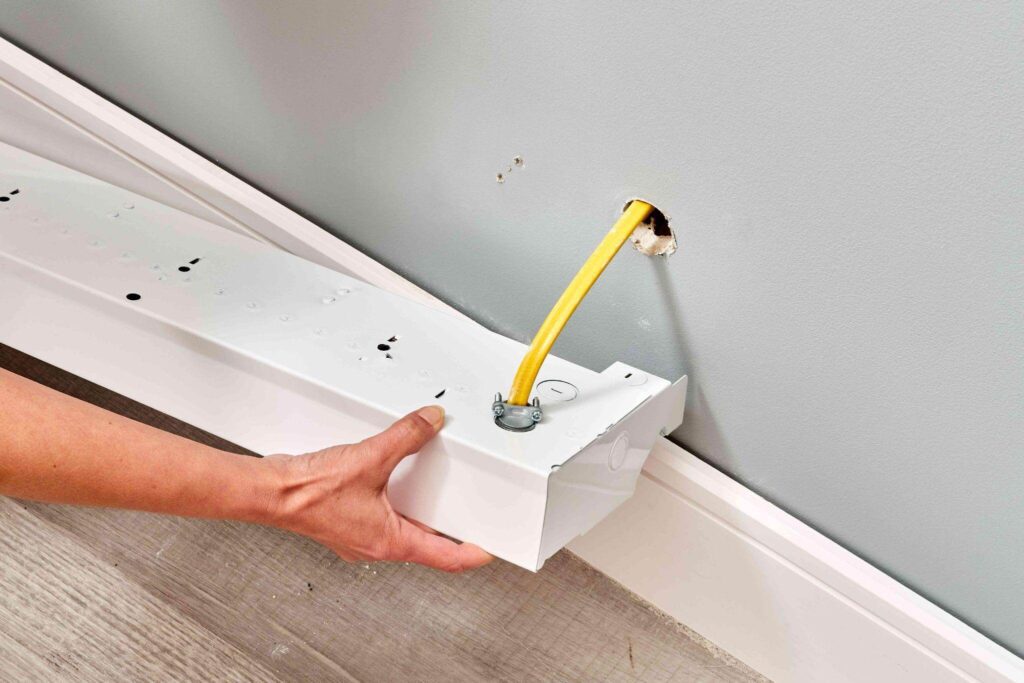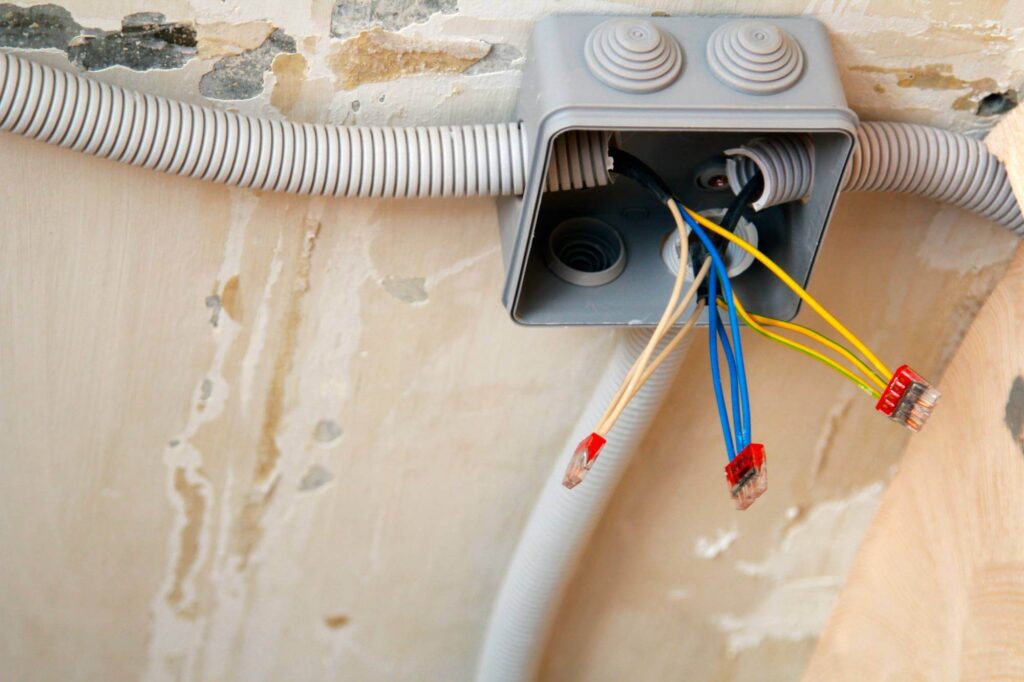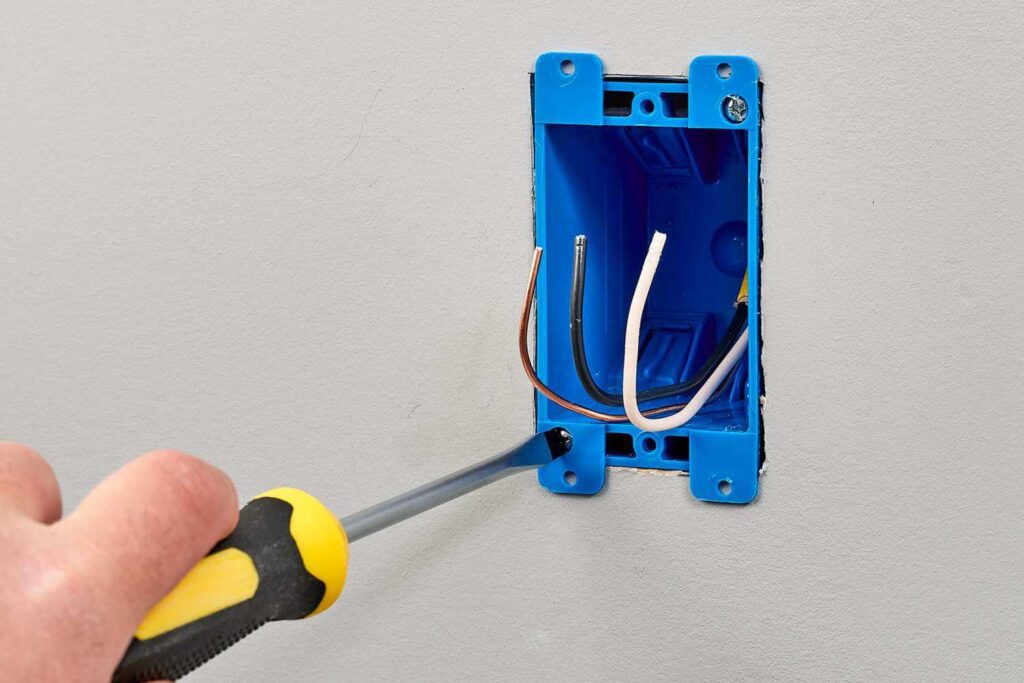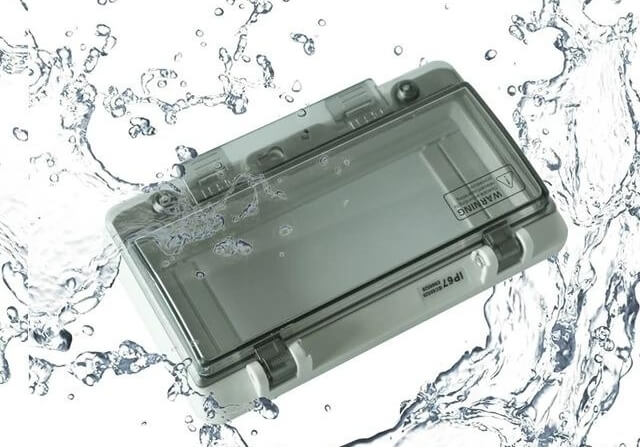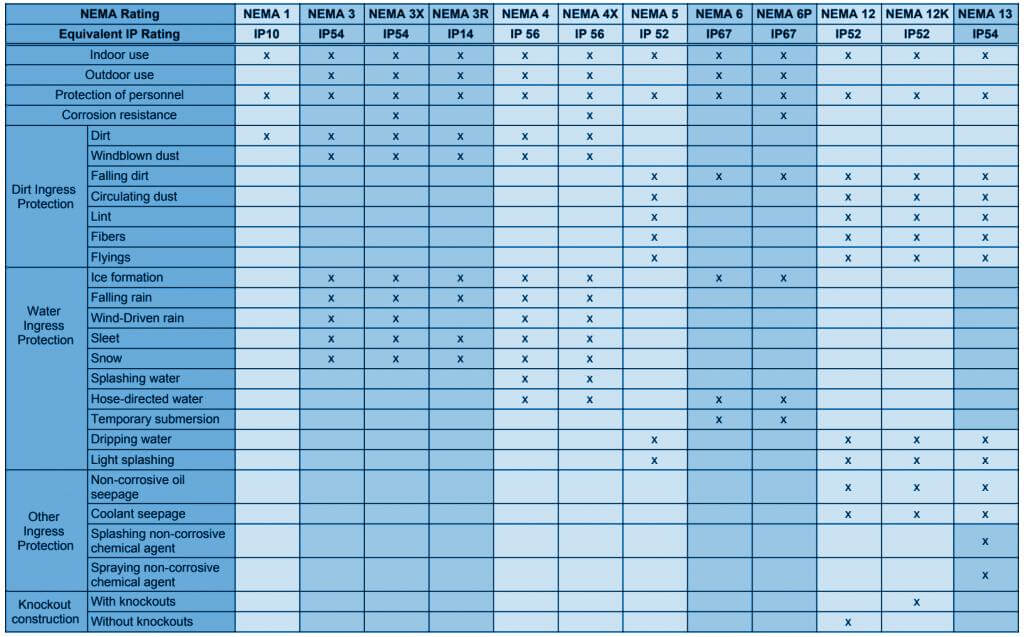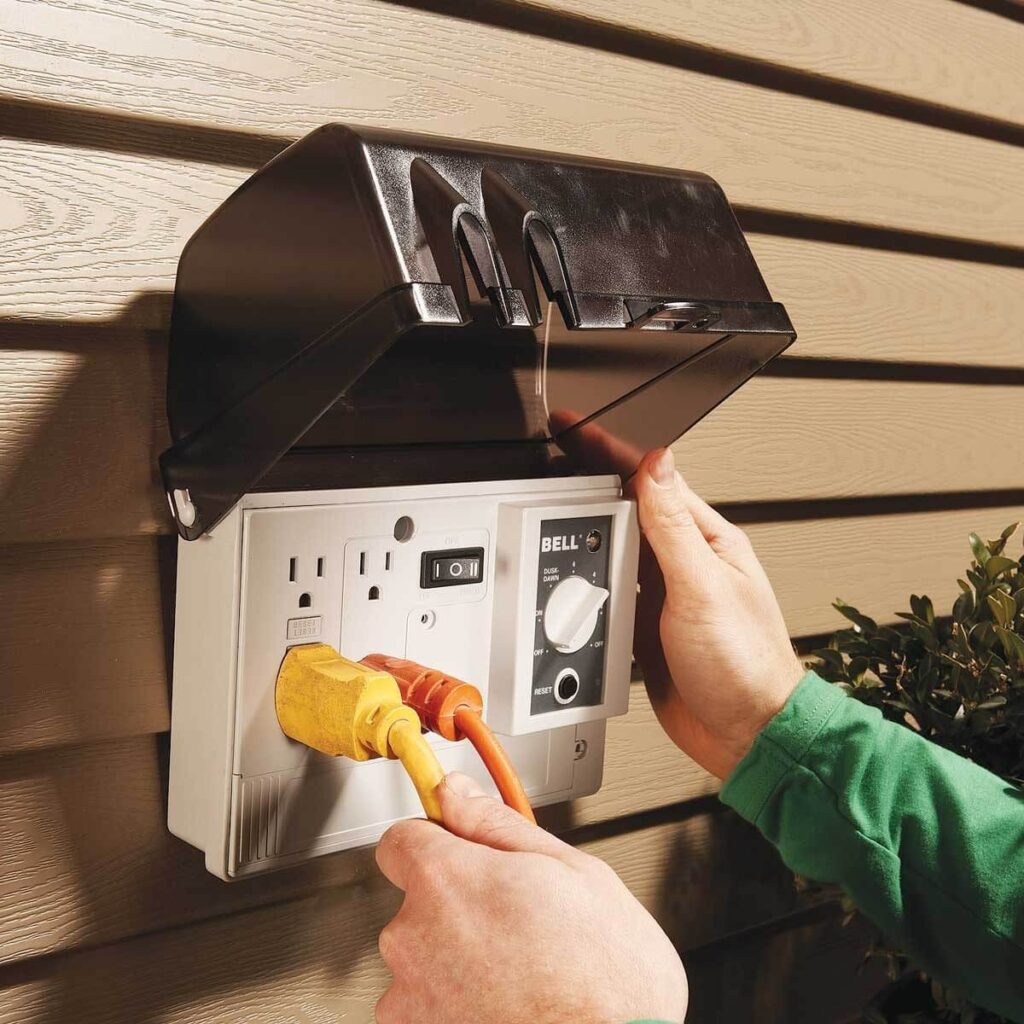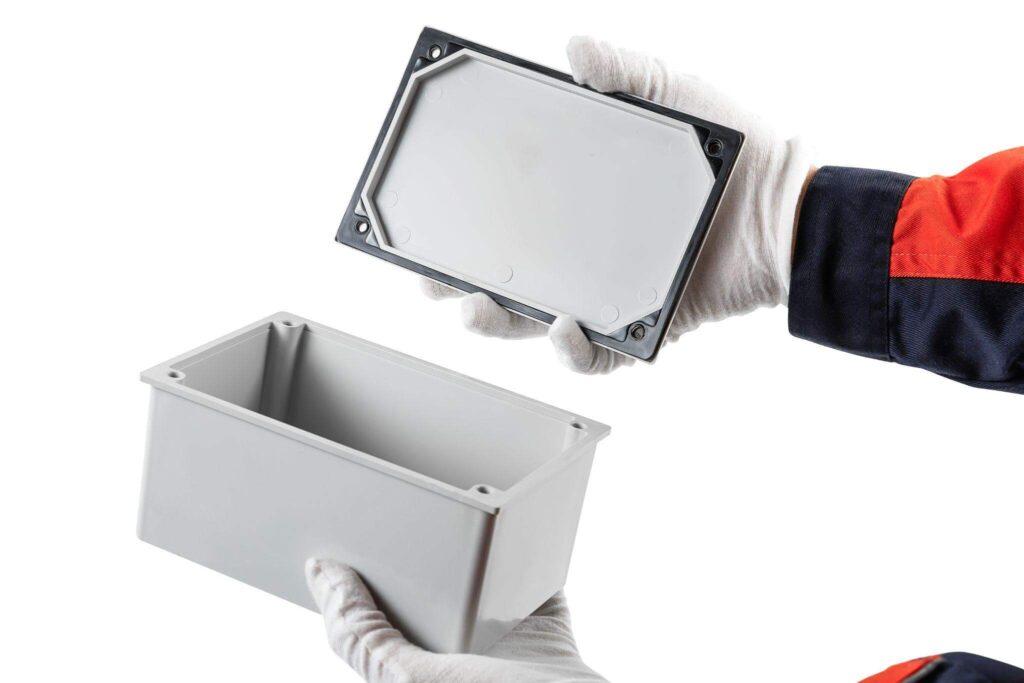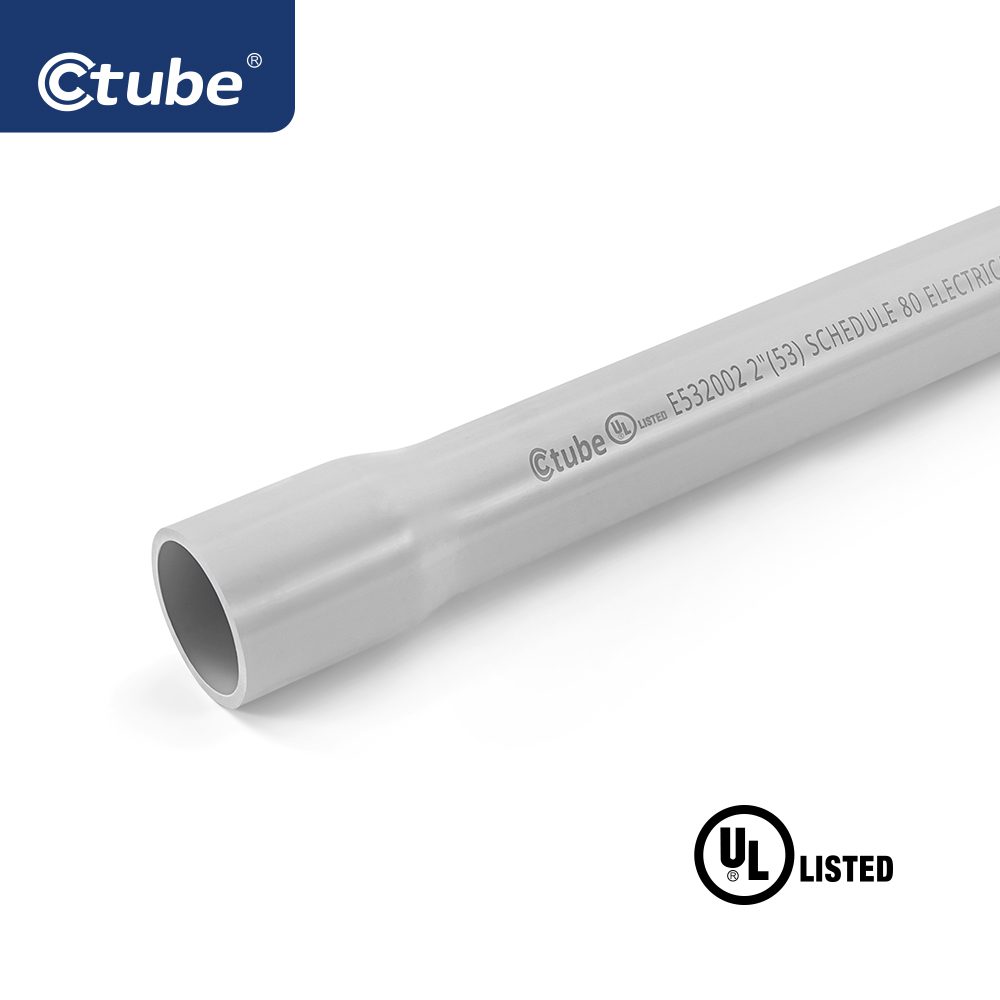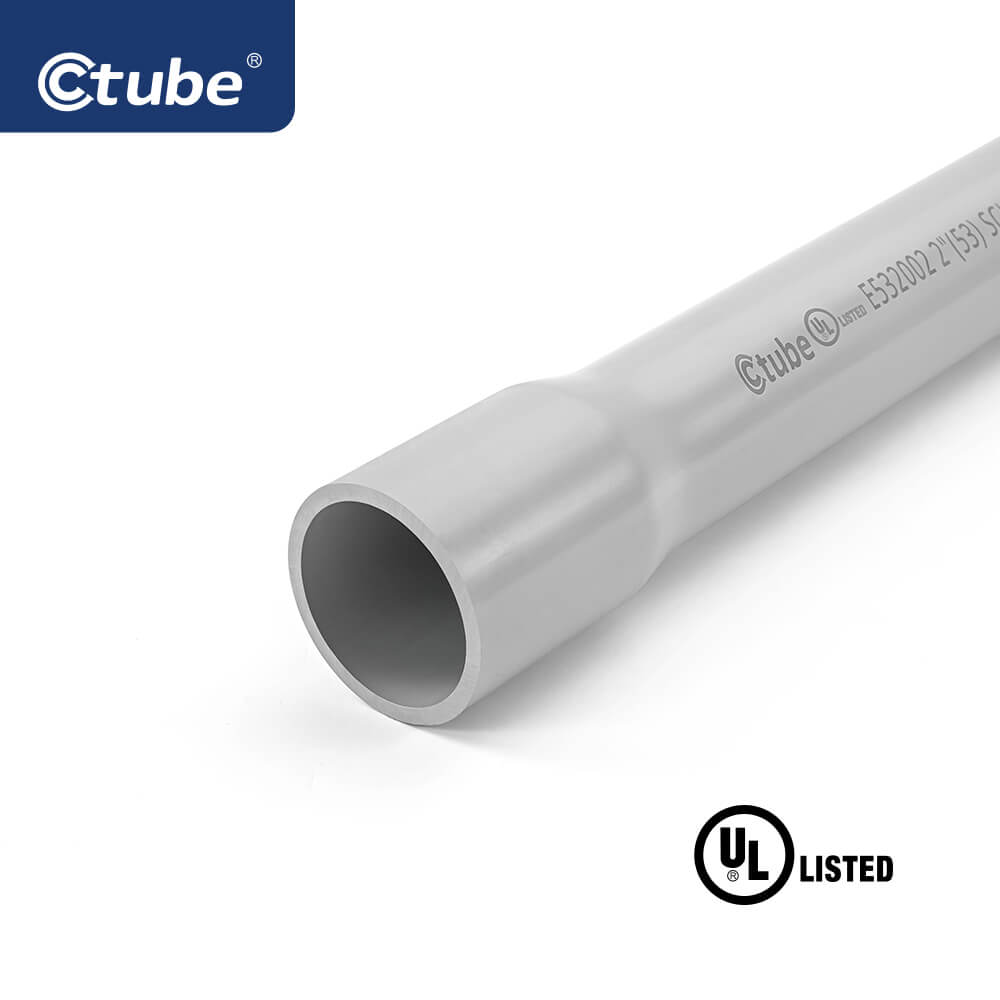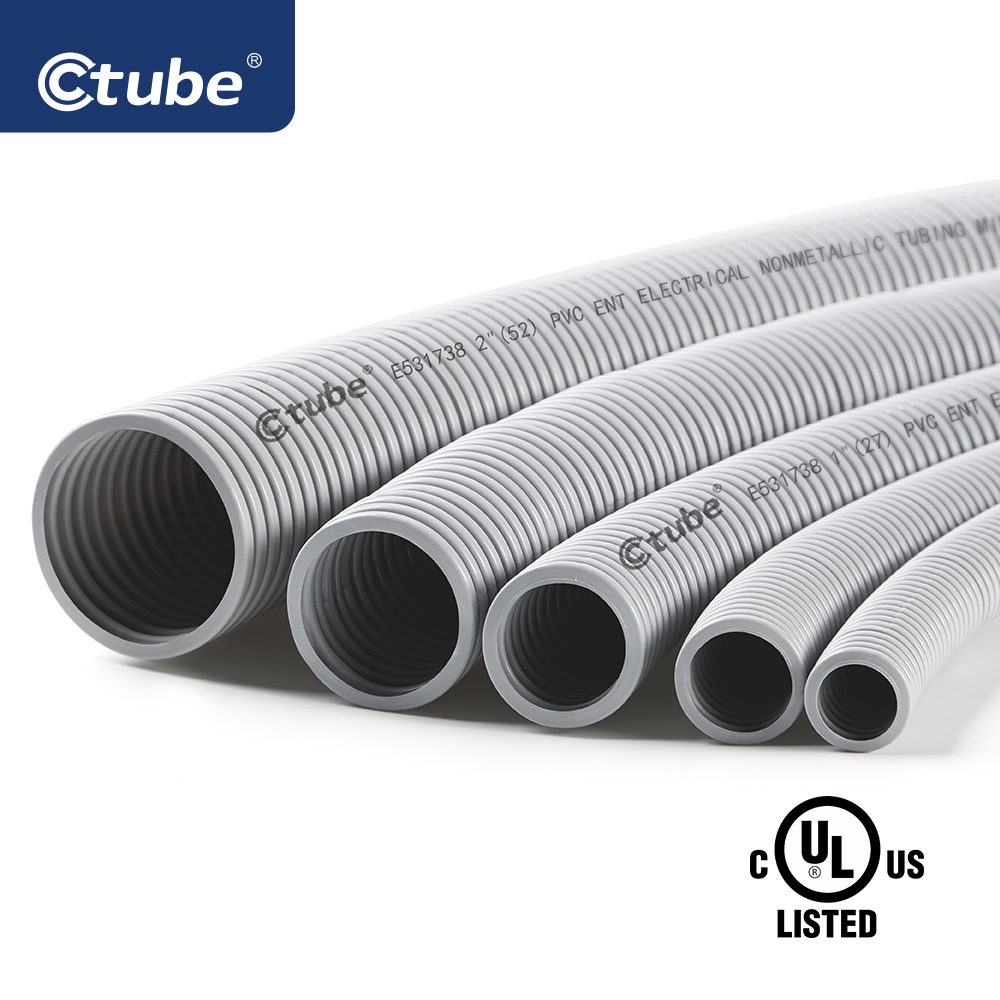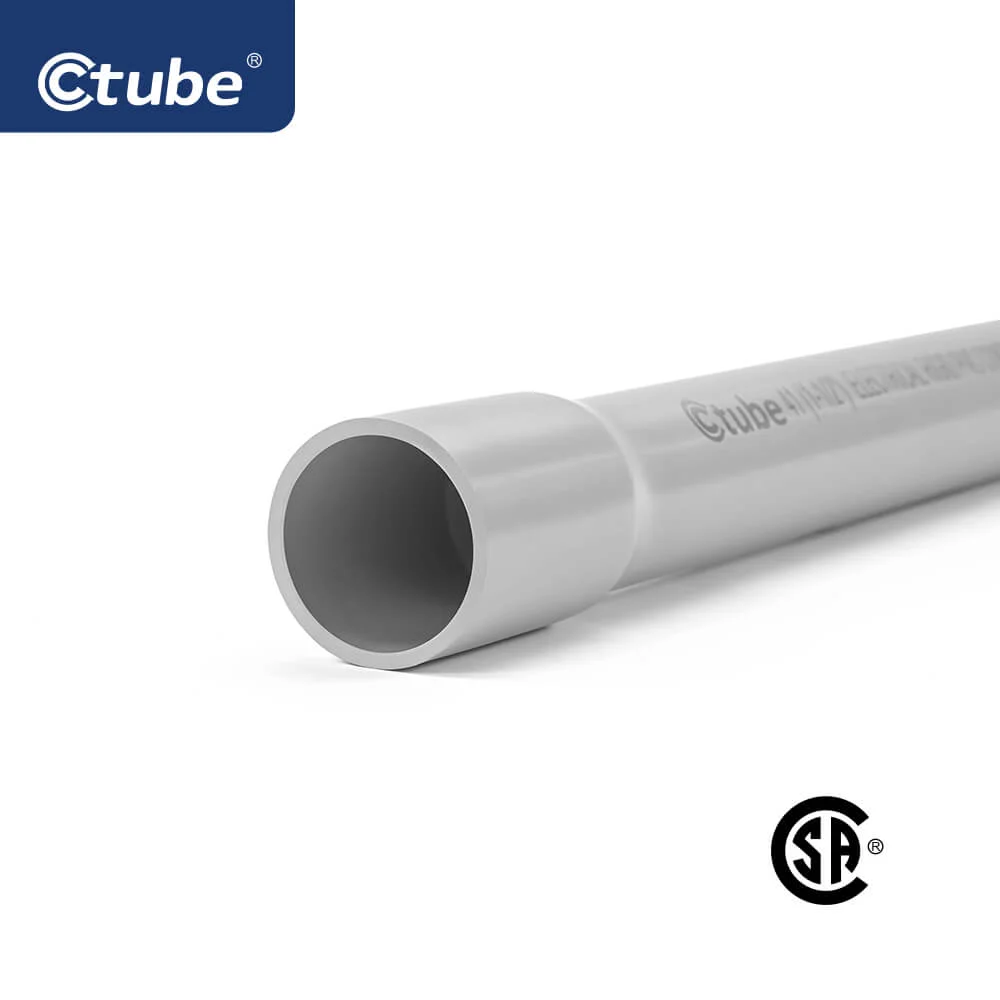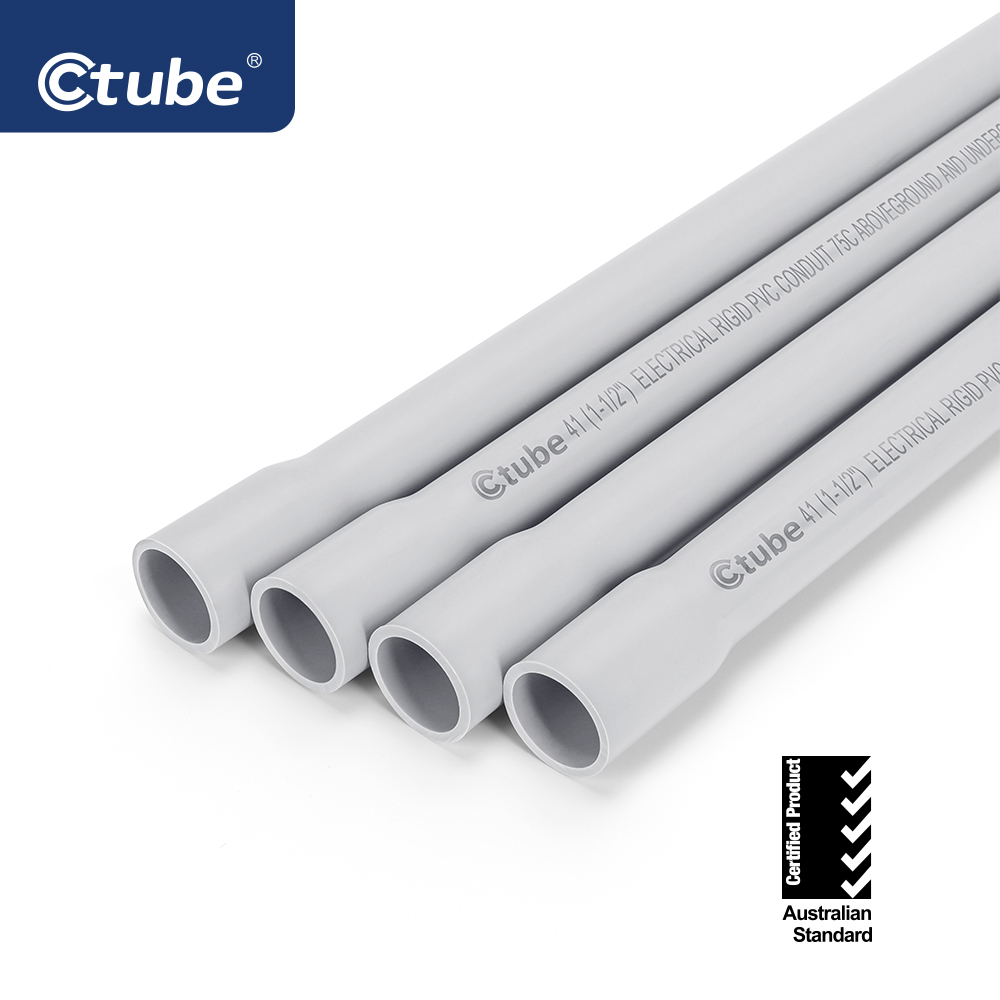Table of Contents
Toggle1. What is an Electrical Box?
Electrical boxes are an essential component in any electrical system, serving as a hub for electrical connections and wiring. Whether you’re working on a residential, commercial, or industrial project, understanding the role of electrical boxes is crucial for ensuring safety and functionality.
The primary function of an electrical box is to create a safe environment for electrical connections by shielding them from accidental contact. Without an electrical box, wiring connections could become exposed, leading to potential risks such as short circuits, electrical fires, or shock hazards. Electrical boxes are typically installed during the construction or renovation of buildings and are key to maintaining a compliant and safe electrical system.
The purpose of electrical boxes also extends to organizing the wiring system. By containing wires in a single, accessible location, they allow for easier maintenance and troubleshooting. Electrical boxes also act as a point of transition between the electrical wiring and the connected devices, such as switches, outlets, or lighting fixtures.
2. Types of Electrical Boxes
Choosing the right type of electrical box is essential for safe and code-compliant installations. In Electrical boxes can be categorized according to various benchmarks, which help in selecting the appropriate type for different projects. These benchmarks include material composition, functional purpose, and shape, among others. We explore these different classifications in the following briefly.
2.1 Function-Based Classification
Electrical boxes are also classified by their intended function, with specific designs tailored to support different electrical needs.
- Junction Boxes: These are used as connection points for wires, providing a safe enclosure for splices and organizing multiple wire pathways. They are vital for ensuring safety and maintaining the integrity of the electrical system.
- Socket (Outlet) Boxes: Used to enclose electrical outlets or receptacles, outlet boxes are found in nearly every residential and commercial building.
- Switch Boxes: These are designed to house electrical switches. They come in a range of sizes to accommodate different types of switches, from single-pole to multi-gang configurations.
2.2 Shape Classification
Electrical boxes come in different shapes, which play a role in their installation and use, particularly when dealing with specific wiring configurations.
- Round Boxes: These are typically used for ceiling lights or fans where circular fixtures need to be installed. Their shape makes them suitable for rounded electrical devices and wiring layouts.
- Square Boxes: These boxes offer more space for wire connections and are commonly used for organizing multiple wiring splices. The square shape allows for more efficient use of space in junction points with a higher number of wires.
- Rectangular Boxes: Common for outlets and switches, rectangular boxes offer an elongated shape that accommodates electrical devices mounted flush with the wall.
2.3 Material Classification
Electrical boxes are primarily divided into metal and non-metallic types based on their material.
- Metal Electrical Boxes: These are made from materials such as steel or aluminum and are widely used in commercial or industrial applications. Metal boxes are strong, durable, and provide better fire resistance and grounding options.
- Non-metallic Electrical Boxes: Typically made of plastic, such as PVC or ABS, these boxes are more commonly used in residential applications. They are lightweight, corrosion-resistant, and safer to handle because they do not conduct electricity.
In this post, we’ll take an in-depth look at the various types of electrical boxes based on the classifications mentioned above. We hope this information helps you better understand electrical boxes and enables you to choose the right one for your project.
3. Junction Boxes
Junction boxes are one of the most common types of electrical boxes, designed to protect and manage wiring connections in both residential and commercial settings.
Junction boxes come in different shapes to suit different installation situations and environments.
3.1 Square & Rectangular Junction Box – Best for Multiple Electrical Wire Connections
A square or rectangular junction box provides a compact yet spacious design with a square shape that allows for multiple conduits to enter from different directions. This design makes it ideal for managing several wire connections in larger installations, with additional space at the corners to house more conductors, connectors, or splices.
Square or rectangular junction boxes are commonly used in residential lighting, commercial wiring, and more complex industrial electrical systems. Available in both plastic and metal, they offer durability and versatility for various electrical installations.
3.2 Round Pan & Octagonal Ceiling Box – Designed for Ceiling Fans and Light Fixtures
A round pan junction box is circular and typically used for ceiling-mounted light fixtures and small wall lighting installations. These shallow boxes are designed for low-voltage connections where space is limited, making them ideal for simpler applications. The round shape allows for easy installation in confined areas, particularly in ceiling and wall lighting setups. However, they are best suited for installations with limited electrical demands, as their size restricts the number of wire connections they can accommodate.
In contrast, the octagonal junction box provides slightly more interior space than a round box, featuring eight sides that offer stability and room for additional wiring. This design makes it suitable for heavier installations, such as ceiling fans or larger light fixtures, where more connections or splices are required.
3.3 Electrical Circular Junction Box -Multiple Ways for Wiring Changing
An electrical circular junction box is a flexible, round-shaped box designed to accommodate different wiring configurations, making it suitable for a variety of electrical installations. These boxes are widely used in both residential and commercial environments, where cables need to be connected or branched in multiple directions. Depending on the wiring requirements, these junction boxes can offer various entry and exit points for conduits or cables.
- 1-Way Junction Box: This configuration allows for a single cable entry and exit point, used when wiring continues in one direction without branching. It’s typically installed where the electrical connection doesn’t need to split or change direction, providing a simple through-connection.
- 2-Way Junction Box: In this setup, two entry points are positioned directly opposite each other, allowing cables to enter and exit in a straight line. This is useful in situations where wiring needs to be extended in a linear fashion between two points.
- Right Angle (90-degree) Junction Box: The right-angle configuration offers two entry points at a 90-degree angle to each other, ideal for installations where cables need to turn corners. This setup is commonly used in corners of walls or ceilings to change the direction of the wiring path without stress on the cables.
- 3-Way (T Junction) Box: This box has three entry points, creating a T-shaped configuration, which is ideal for situations where a main cable needs to branch off in two different directions. It’s frequently used for splitting wiring into two pathways.
- 4-Way (Cross Junction) Box: With four entry points arranged in a cross pattern, the 4-way junction box is used for more complex installations where cables converge from four different directions. This is perfect for grid-like wiring systems or areas where multiple circuits need to be connected.
- U-Way Junction Box: The U-way configuration allows cables to enter and exit in a loop or U-shape. This is typically used when wiring needs to circle back on itself, often found in compact or confined installations that require more flexible routing.
- Y-Way Junction Box: This setup provides three entry points in a Y-shaped pattern, allowing for wiring to split or converge at three different angles. It’s commonly used for installations where multiple cables need to branch in separate directions, such as in complex lighting or alarm systems.
- H-Way Junction Box: Offering multiple entry points in a configuration resembling the letter “H”, this box is designed for extensive wiring systems with multiple pathways. It’s often used in industrial or commercial settings where a large number of cables need to be connected in various directions.
3.4 Weatherproof Electrical Boxes – Durable Outdoor Protection for Electrical Installations
Weatherproof electrical boxes are specifically designed to protect electrical connections and devices from harsh outdoor conditions. So called adaptable box. These boxes are essential for installations exposed to rain, snow, dust, and other environmental factors. They are built to meet certain standards for water and dust resistance, ensuring that the electrical components inside remain safe and operational despite external weather conditions.
- Materials and Construction: Weatherproof boxes are typically made from durable materials like high-impact PVC, aluminum, or stainless steel. These materials are resistant to corrosion and can withstand extreme temperatures and weather conditions.
- Design Features: These boxes feature sealed covers and gaskets to prevent moisture and debris from entering. They often come with knockouts or conduit entries to accommodate different types of wiring and connections.
- Applications: Commonly used for outdoor electrical installations, such as exterior lighting, outdoor outlets, and electrical connections on building exteriors. They are also used in environments where the electrical box might be exposed to water or dust, ensuring long-term reliability and safety.
4. Outlet Boxes
An outlet box is a small, enclosed fixture that houses electrical connections for outlets. Outlet boxes help organize and protect wiring, prevent electrical fires, and maintain the integrity of your home’s electrical system.
To help with understanding, we will categorize outlet boxes in the following ways.
| Installation Type | Intended Environment | Size & Structure |
| Old work outlet boxes | Indoor outlet boxes | Single-gang outlet boxes |
| New work outlet boxes | Outdoor outlet boxes | Double/multiple gang outlet boxes |
4.1 Old Work Outlet Boxes
Old work outlet boxes are specially designed for retrofitting electrical outlets in existing walls where no electrical boxes currently exist. These boxes are ideal for scenarios where walls have already been finished with drywall or plaster, allowing for the addition of outlets without the need for extensive renovations.
4.1.1 Key Features of Old Work Outlet Boxes
- Adjustable Clamps: Old work boxes are equipped with built-in adjustable clamps or tabs that secure the box firmly to the wall material after installation.
- No Need for Stud Access: Unlike new work boxes, old work boxes can be installed without needing to access the wall studs, making them perfect for finished walls.
4.1.2 Installation Process of Old Work Outlet Boxes
- Cut an Opening: Begin by measuring and cutting an appropriate opening in the wall where the outlet will be located. Ensure the cutout is the correct size for the box to fit snugly.
- Insert the Box: Carefully insert the old work outlet box into the cutout.
- Secure the Box: Tighten the built-in clamps by turning the screws. This action will pull the clamps against the back of the wall, securely holding the box in place.
4.2 New Work Outlet Boxes
New work outlet boxes are used primarily in construction projects where the walls are open and accessible, such as during the initial framing stages of new homes or major renovations. These boxes provide a solid foundation for electrical outlets, ensuring they are properly supported within the wall structure.
4.2.1 When to Use New Work Outlet Boxes
- New Construction: New work boxes are best suited for projects where the walls are not yet finished, allowing for direct attachment to the framing.
- Major Renovations: They can also be used during significant renovations when walls are being opened up for updates.
4.2.2 Installation Requirements for New Work Outlet Boxes
- Mount the Box: Position the new work outlet box securely onto the wall studs or framing. Ensure it is attached firmly to provide stability for the future outlet.
- Check Positioning: Make sure the box is installed at the correct height and aligned properly to accommodate the finished wall thickness. This will prevent any issues once the drywall or wall panels are applied.
4.3 Outdoor vs Indoor Outlet Boxes
Outdoor outlet boxes must withstand harsher conditions compared to their indoor counterparts. Consequently, their design includes several crucial considerations:
- Weatherproofing: Outdoor boxes are typically rated for weather resistance (e.g., NEMA ratings) to protect against rain, snow, and extreme temperatures. They feature sealed gaskets, covers, and other protective measures to prevent moisture intrusion.
- Durability: Made from robust materials such as heavy-duty plastic or metal, outdoor boxes are built to resist corrosion, UV degradation, and physical impacts. This durability ensures long-term performance in challenging environments.
- Grounding and Bonding: Outdoor boxes often include features for grounding and bonding to protect users from electrical shock, especially in damp conditions.
4.4 Classification by Size: Single-Gang vs. Double-Gang Outlet Boxes
- A single-gang outlet box is designed to hold one electrical outlet or switch. These boxes are compact and typically measure about 2 inches wide by 3 inches high. They are ideal for scenarios where space is limited or where only one outlet is necessary.
- A double-gang outlet box is designed to hold two electrical outlets or switches side by side. These boxes are typically about 4 inches wide by 3 inches high, allowing for more functionality in a single unit.
Single-gang outlet boxes hold one electrical outlet or switch and are ideal for small spaces, making them cost-effective and easy to install. However, they limit functionality to just one connection.
In contrast, double-gang outlet boxes can accommodate two outlets or a combination of outlets and switches, providing more versatility for areas with higher electrical needs. While they require more wall space, their ability to serve multiple devices makes them a better choice in busy environments.
5. Switch Boxes
5.1 Definition of Switch Electrical Boxes
A switch electrical box is an enclosure that protects electrical connections and provides a mounting point for switches. Made from materials such as plastic or metal, these boxes are designed to accommodate various switch types, from standard light switches to more complex dimmers and timers. The primary purpose of a switch box is to contain the wiring connections securely while providing a surface for the switch itself, making it easy to operate electrical devices.
5.2 Importance in Electrical Installations
The importance of switch electrical boxes cannot be overstated. They play a critical role in ensuring safety and compliance with electrical codes. By enclosing electrical connections, these boxes help prevent accidental contact with live wires, reducing the risk of electrical shock or fire. Additionally, proper installation of switch boxes contributes to the overall aesthetics of a space, as they can be neatly integrated into walls and ceilings.
5.3 Difference Between Switch Boxes and Outlet Boxes
While both switch and outlet boxes serve as enclosures for electrical connections, their functions differ significantly. Switch boxes are specifically designed to hold switches that control the flow of electricity to devices like lights and fans.
In contrast, outlet boxes are intended for electrical outlets that provide power to appliances and devices. Outlet boxes typically accommodate multiple wires for power distribution, whereas switch boxes focus on connecting a switch to a single circuit.
Understanding these distinctions is crucial for selecting the right type of box for your electrical installation needs.
6. Electrical Box Materials: Pros and Cons
The choice of material for electrical junction boxes can significantly impact the safety, durability, and performance of an electrical system. Various materials are used to meet specific environmental, structural, and cost requirements. This section delves deeper into the materials used for junction boxes, outlining their advantages, drawbacks, and best-use scenarios.
6.1 Metal Electrical Boxes
6.1.1 Types of Metal Electrical Boxes
- Steel: A common choice due to its strength and durability. Steel boxes are often coated to prevent corrosion, making them suitable for heavy-duty environments.
- Galvanized Steel: Steel coated with zinc for enhanced rust and corrosion resistance, ideal for outdoor or damp conditions.
- Aluminum: Known for its lightweight and corrosion-resistant properties, aluminum is used in environments requiring protection from the elements or exposure to chemicals. However, it is softer and more prone to damage than steel.
6.1.2 Advantages of Metal Electrical Boxes
- High Durability: Strong and capable of withstanding physical damage, making them perfect for industrial or construction settings.
- Fire Resistance: Metal boxes do not melt or burn, providing additional protection against electrical fires.
- Grounding Capability: Easily grounded, enhancing safety in electrical systems.
- Heat Dissipation: Efficiently conducts heat, reducing the risk of overheating in electrical components.
6.1.3 Disadvantages of Metal Electrical Boxes
- Higher Cost: Generally more expensive than plastic options due to material costs and installation complexity.
- Corrosion Risk: Even galvanized steel can rust over time if the coating is damaged, making them less suitable for consistently moist environments.
- Weight: Heavier than plastic alternatives, complicating installation in overhead or hard-to-reach areas.
- Complex Installation: Requires more tools and skill for installation, particularly for cutting conduit openings and ensuring proper grounding.
6.2 Plastic Electrical Boxes (PVC and ABS)
Plastic junction boxes, primarily made from Polyvinyl Chloride (PVC) and Acrylonitrile Butadiene Styrene (ABS), are popular for their versatility and durability. These materials are especially suited for residential and light commercial applications, particularly in environments where moisture or chemical exposure is a concern.
6.2.1 Advantages of Plastic Electrical Boxes
- Cost-Effective: Plastic junction boxes are generally much more affordable than metal alternatives, making them ideal for budget-conscious projects.
- Corrosion Resistance: Both PVC and ABS do not rust or corrode, making them perfect for use in wet or humid environments, such as bathrooms or outdoor installations.
- Lightweight: These boxes are lightweight, which allows for quicker and easier installation, especially in hard-to-reach areas.
- Non-Conductive: As non-conductive materials, PVC and ABS eliminate the risk of electrical shock if the box is damaged, and they do not require grounding.
6.2.2 Disadvantages of Plastic Electrical Boxes
- Heat Sensitivity: PVC can deform, warp, or melt when exposed to high temperatures, making it less suitable for applications involving high-power electrical systems. ABS also has a lower melting point compared to metals, limiting its use in high-temperature environments.
- Lower Durability: While ABS is more impact-resistant than PVC, both materials are not as strong as metal and can be prone to cracking under stress, especially in environments where physical impacts may occur.
- Flammability: Although flame-retardant grades of PVC and ABS are available, these materials can still burn and release toxic fumes when exposed to high heat for extended periods.
- UV Degradation: ABS can degrade over time when exposed to direct sunlight, making it unsuitable for prolonged outdoor use unless it is UV stabilized.
6.3 Fiberglass Junction Boxes (Fiber-Reinforced Plastic)
Fiberglass is a composite material made of plastic reinforced with glass fibers. It is strong and resistant to harsh environments, making it popular for demanding industrial and outdoor applications.
6.3.1 Advantages of Fiberglass Electrical Boxes
- Strength and Durability: Highly resistant to impacts, chemicals, and extreme weather.
- Corrosion Resistance: Ideal for outdoor, marine, or industrial environments.
- Non-Conductive: Simplifies installation as it eliminates the need for grounding.
- High Temperature and Fire Resistance: Withstands higher temperatures than most plastics and offers better fire resistance.
6.3.2 Disadvantages of Fiberglass Electrical Boxes
- Higher Cost: Generally more expensive than PVC or ABS due to material complexity.
- Weight: Heavier than other plastic options, potentially complicating installation.
- Brittleness: Can crack if mishandled during installation or exposed to sudden shocks.
7. Key Considerations When Choosing an Electrical Box
Selecting the right electrical box for a project is essential to ensuring safety, functionality, and compliance with regulations. Various factors must be considered, such as the size and capacity of the box, whether it will be used indoors or outdoors, fire safety considerations, and the number of wires that the box needs to accommodate. Each of these elements influences the safety of the electrical system, the ease of installation, and long-term performance.
7.1 Choosing the Right Electrical Box Size and Capacity
One of the most critical considerations when selecting an electrical box is its size and capacity. Electrical boxes come in a variety of sizes, and choosing the wrong size can lead to safety hazards, installation challenges, and non-compliance with electrical codes.
- Box Size and Fill Capacity: The electrical box must be sized correctly to accommodate the number of wires, devices, and connectors it will contain. Each wire, connector, and device inside the box takes up space and contributes to the box’s overall “fill capacity.” If the box is too small, the wires may become overcrowded, leading to overheating, short circuits, and potentially, electrical fires. To avoid these issues, the National Electrical Code (NEC) provides guidelines on the maximum number of conductors that can safely fit within an electrical box, based on its size and shape.
- Specifying the Number of Wires: When determining the appropriate box size, you must account for the number of wires that will be connected within the box. Every conductor that enters or leaves the box requires a specific amount of space, which needs to be factored into the total box fill calculation. NEC guidelines state that each 14-gauge wire takes up 2 cubic inches of space, while 12-gauge wires take up slightly more, at 2.25 cubic inches. Additionally, each device (such as switches or outlets) and wire clamp adds to the total capacity requirement.
It’s important to consider the following:
- Conductors: Each wire entering the box, including ground wires, must be counted. Conductors must be grouped by their size and material (copper or aluminum), as different gauges occupy different volumes.
- Devices: Each switch, receptacle, or GFCI outlet installed in the box requires additional space. The larger the device, the more volume it occupies.
- Wire Nuts and Connectors: Any wire nuts, connectors, or pigtails within the box also take up space and should be considered when calculating the total fill.
General Guidelines for Box Size:
- Single-Gang Boxes: Typically used for one switch or outlet, these boxes have a volume of 12-18 cubic inches and can accommodate a limited number of wires.
- Double-Gang Boxes: Designed for two devices, these boxes provide 20-30 cubic inches of space, enough to hold more conductors and connectors.
- Multi-Gang Boxes: For installations with multiple devices, multi-gang boxes offer volumes of 30-60 cubic inches or more, depending on the number of devices.
Choosing a box that can accommodate the number of wires and devices ensures a safer installation and helps meet NEC compliance requirements.
7.2 Indoor vs. Outdoor Electrical Box Requirements
Another crucial consideration is whether the electrical box will be installed indoors or outdoors. Each environment presents different challenges, and the electrical box must be suited to the conditions in which it will be used.
7.2.1 Indoor Electrical Boxes
- General Use: Indoor electrical boxes are typically used in controlled environments such as homes, offices, or commercial buildings. These boxes are often made from plastic (PVC, ABS) or metal and are not designed to withstand harsh weather or extreme temperatures.
- Code Requirements: Indoor electrical boxes must meet NEC guidelines regarding installation locations, box size, and grounding. Even in indoor environments, it’s important to ensure that the box can accommodate the necessary number of wires to avoid overcrowding.
- Moisture Protection: In areas like kitchens and bathrooms, moisture may still pose a risk. Electrical boxes in these locations should be protected using ground-fault circuit interrupter (GFCI) outlets or by sealing them properly to prevent water intrusion, which can cause electrical hazards.
7.2.2 Outdoor Electrical Boxes
- Weatherproofing: Outdoor electrical boxes are designed to withstand exposure to the elements, including rain, snow, and temperature fluctuations. These boxes are typically made from corrosion-resistant materials, such as stainless steel, aluminum, or durable plastics, and feature gaskets and seals to prevent water ingress.
- NEMA and IP Ratings: Outdoor boxes should comply with National Electrical Manufacturers Association (NEMA) or Ingress Protection (IP) ratings to ensure adequate protection against moisture, dust, and debris. For example, NEMA 3R or NEMA 4X ratings indicate that the box is suitable for outdoor use and resistant to water and corrosion.
- Temperature Resistance: Outdoor boxes must be capable of handling extreme temperatures, both hot and cold. In extreme environments, metal boxes may be preferred over plastic due to their durability and ability to dissipate heat.
- GFCI Protection: Outdoor electrical boxes should be equipped with GFCI outlets to protect against ground faults. These outlets are especially critical in outdoor environments where moisture is a concern.
8. Electrical Box Installation Best Practices
Proper installation of electrical boxes is crucial for ensuring both safety and functionality in any electrical system.
8.1 Tools You Need for Electrical Box Installation
- Screwdrivers: Both flathead and Phillips screwdrivers are necessary for securing boxes, attaching devices, and fastening covers.
- Wire Strippers: These are used to strip insulation from electrical wires without damaging the wire itself.
- Pliers: Needle-nose or lineman’s pliers help twist and secure wires during the installation process.
- Voltage Tester: Ensures that the circuit is de-energized before you begin work.
- Drill with Assorted Bits: Useful for drilling holes to mount the box or make adjustments to the wall or ceiling.
- Fish Tape: Helps pull wires through conduit or walls, especially in tight spaces.
- Level: Ensures that the box is mounted evenly, preventing future alignment issues with devices and covers.
- Stud Finder: Detects studs behind the wall to securely anchor boxes, especially for heavier devices like ceiling fans.
- Measuring Tape: Ensures precise placement of the box, meeting height and location standards.
- Hammer: Used to install nails when securing the box or making adjustments to mounting surfaces.
- Electrical Tape: Used to insulate connections and secure exposed wire ends.
8.2 Step-by-Step Guide for Installing Electrical Boxes (General Guidance)
- Turn Off Power: Always start by switching off power to the circuit you’ll be working on. Verify with a voltage tester that no current is present.
- Choose the Right Box: Select an electrical box that fits your specific application. Consider factors such as the box material (metal, PVC, etc.), its size, and its rating for the number of wires and devices it will accommodate.
- Mark and Cut the Opening: Use a measuring tape to mark the spot where the box will be installed. For retrofits, cut an opening in the drywall or other surface that matches the dimensions of the box. Use a drywall saw or utility knife to make clean cuts.
- Prepare the Box for Mounting: If installing a new box, remove knockouts for the entry points where cables will be routed. Ensure the cables are properly inserted, leaving at least 6 inches of extra wire inside the box for easy connection.
- Secure the Box: For wall-mounted boxes, use screws or nails to anchor the box securely to a stud or wall surface. If installing a ceiling box, make sure it is rated to support heavy loads like ceiling fans or light fixtures and is properly secured to a joist or other support structure.
- Wire Connections: Use wire strippers to remove insulation from the wire ends. Make wire connections using wire nuts, matching color-coded wires (hot, neutral, ground) appropriately. For metal boxes, ensure the ground wire is properly connected to the box using a grounding screw.
- Mount the Devices: Attach switches, outlets, or other devices to the box using the included mounting screws. Ensure that devices are level and securely fastened.
- Install the Cover Plate: Once all connections are made and devices are mounted, secure the cover plate over the box. This keeps wires protected and provides a finished look.
- Test the Installation: Restore power to the circuit and test the installed device or wiring to ensure everything functions correctly.
- Check Compliance: Ensure that the installation meets local building codes and electrical standards for safety.
9. Understanding Ratings and Compliance Standards for Electrical Boxes
When selecting electrical boxes, it’s crucial to ensure they meet the required ratings and standards to guarantee safety, performance, and compliance. Electrical boxes often face harsh environmental conditions, such as dust, moisture, and physical impact, so their ratings reflect their durability and protective capabilities. This section will explore the most critical ratings and standards applied to electrical boxes, including IP, NEMA, UL, and NEC.
9.1 Common IP Ratings for Electrical Boxes
IP65: Dust-tight and protected against low-pressure water jets from any direction. This rating is common for outdoor and industrial boxes.
IP66: Dust-tight and protected against powerful water jets, making it suitable for harsher environments such as industrial or coastal areas.
IP67: Dust-tight and can withstand immersion in water up to 1 meter for a short time, ideal for locations where temporary submersion is possible.
We sometimes see other letters after the second digit that refer to other protection
F = Oil resistant
H = High voltage apparatus
M = Motion during water test
S = Stationary during water test
W = Weather conditions
The letter K is specified in ISO 20653 (replacing DIN 40050-9) and not in IEC 60529.
9.2 NEMA Ratings Explained for Electrical Boxes
The National Electrical Manufacturers Association (NEMA) provides a standardized rating system that defines the level of protection electrical boxes offer against environmental conditions. NEMA ratings are most commonly used in North America and describe the enclosure’s ability to protect electrical components against hazards like dust, dirt, water, oil, and corrosive materials.
9.3 The Importance of UL Ratings for Electrical Boxes
Underwriters Laboratories (UL) is an independent safety certification organization that tests and certifies products, including electrical boxes, to ensure they meet strict safety standards. UL-listed electrical boxes are approved for specific uses and environments, providing users with peace of mind that the products comply with recognized safety standards.
| UL Types | UL-Listed Enclosures |
| Type 1 | Only for indoor use. They provide a degree of protection against contact with the enclosed electrical equipment and against a limited amount of falling dirt. |
| Type 2 | Only for indoor use. They provide a degree of protection against limited amounts of dripping water and falling dirt. |
| Type 3 | For indoor or outdoor use. They provide a degree of protection against windblown dust, rain, and sleet. Any external electrical mechanisms remain operable even while ice-laden. |
| Type 3R | For indoor or outdoor use. They provide a degree of protection against falling rain and sleet. Electrical equipment remains undamaged by the formation of ice on the enclosure. |
| Type 3S | For indoor or outdoor use. They provide a degree of protection against windblown dust, rain, and sleet. Electrical equipment remains undamaged by the formation of ice on the enclosure. |
| Type 4 | For indoor or outdoor use. They provide a degree of protection against splashing water, windblown dust or rain, and hose-directed water. Electrical equipment remains undamaged by the formation of ice on the enclosure. |
| Type 4X | For indoor or outdoor use. They provide a degree of protection against splashing water, windblown dust or rain, and hose-directed water. Electrical equipment remains undamaged by the formation of ice on the enclosure. They resist corrosion too. |
| Type 6 | For indoor or outdoor use. They provide a degree of protection against water entry during temporary submersion at a limited depth. Electrical equipment remains undamaged by the formation of ice on the enclosure. |
| Type 6P | For indoor or outdoor use. They provide a degree of protection against the entry of water during prolonged submersion at a limited depth. |
| Type 11 | For indoor use. They provide a degree of protection for enclosed electrical equipment against corrosive effects of corrosive liquids and gases. |
| Type 12 | For indoor use. They provide a degree of protection against dust, falling dirt, and dripping non-corrosive liquids. |
| Type12K | For Indoor use. They provide a degree of protection against dust, falling dirt, and dripping non-corrosive liquids. They are constructed with knockouts. |
| Type 13 | For Indoor use. They provide a degree of protection against dust and spraying of water, oil, and noncorrosive coolants. |
10. Ctube Electrical Box
Ctube offers a comprehensive range of high-quality electrical boxes, including switch boxes, circular junction boxes, and adaptable boxes. All of these boxes are meticulously designed to comply with relevant industry standards, ensuring maximum safety and reliability.
Our electrical boxes boast the V0 fire rating, making them resistant to flames, ensuring enhanced protection in critical situations. Additionally, they feature waterproof and UV-protected materials, providing durability and performance in both indoor and outdoor environments.
For specialized needs, Ctube offers low-smoke halogen-free and solar series boxes. The low-smoke halogen-free series is ideal for areas where reducing toxic emissions is crucial, while the solar series is engineered for long-lasting outdoor use, offering greater resistance to UV exposure.
FAQs
1. How do I choose the right size electrical box for my project?
To choose the right size electrical box, consider the number of wires, devices (like switches or outlets), and the box’s fill capacity. The National Electrical Code (NEC) provides guidelines, such as each 14-gauge wire requiring about 2 cubic inches of space. Ensure the box is large enough to avoid overcrowding, which can cause overheating. For outdoor or moisture-prone areas, use weatherproof boxes. If future expansion is likely, choose a box with extra capacity. Always check that the box meets NEC standards for safety.
2. Can electrical junction boxes be hidden?
According to the National Electrical Code (NEC) Article 314, electrical junction boxes must remain accessible for maintenance, repairs, and inspections. This means they cannot be permanently concealed behind walls, ceilings, floors, or other structures. The primary reason for this rule is safety—junction boxes contain wire connections, and if an issue arises, such as loose connections or a short circuit, the box needs to be accessible to address the problem.
If junction boxes are hidden behind surfaces, it becomes difficult to inspect or repair the wiring without cutting through the material, which can lead to additional hazards or even violate local building codes. To ensure compliance, junction boxes must either be located in a place that allows easy access or have removable covers that can be opened without damaging walls or structures. However, they can be concealed by removable panels, cabinets, or access doors, as long as they are not permanently obstructed.
3. Can an Adaptable Box Be Used to Extend Electrical Circuit?
Yes, an adaptable box can extend electrical conduit systems. It allows additional conduits to be connected, creating a seamless expansion of the system. Inside the box, wiring connections are safely enclosed, protected from moisture, dust, and physical damage. It’s especially useful when changing conduit directions, branching off to new areas, or adding new equipment.
By providing multiple entry points for conduits, adaptable boxes also offer flexibility in system design while ensuring compliance with safety regulations. They help make future modifications or expansions easier and safer.

